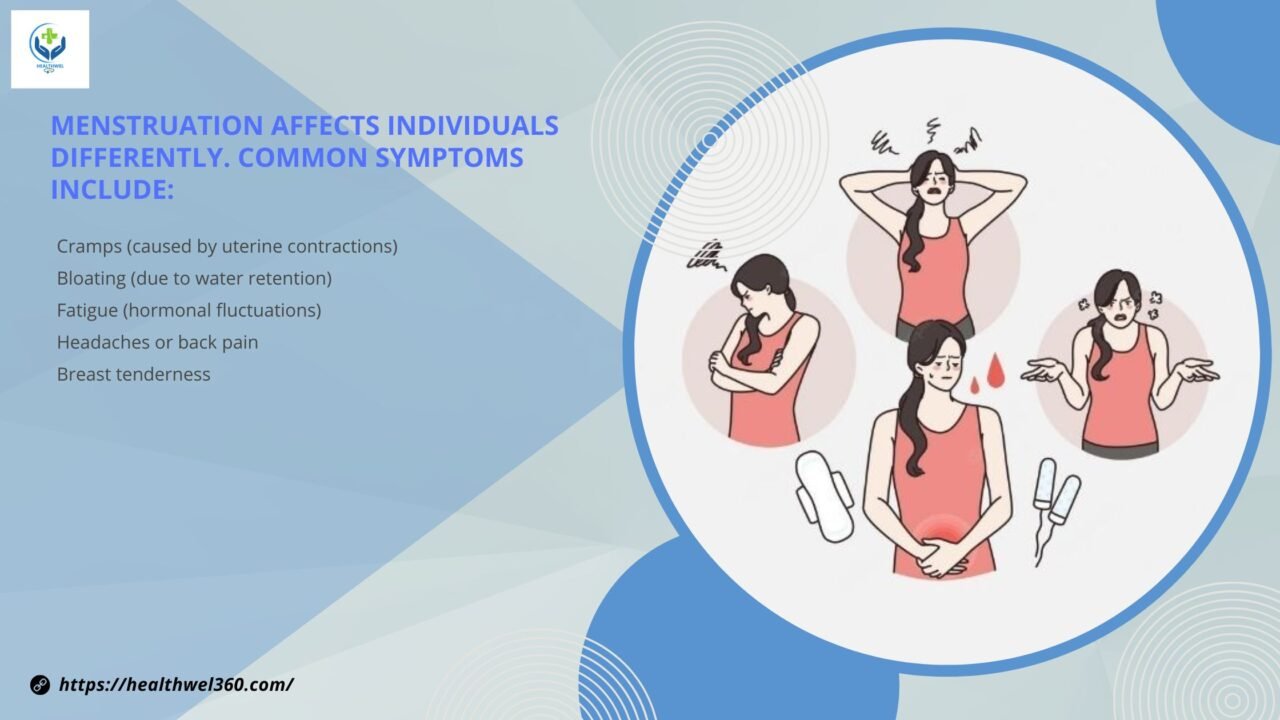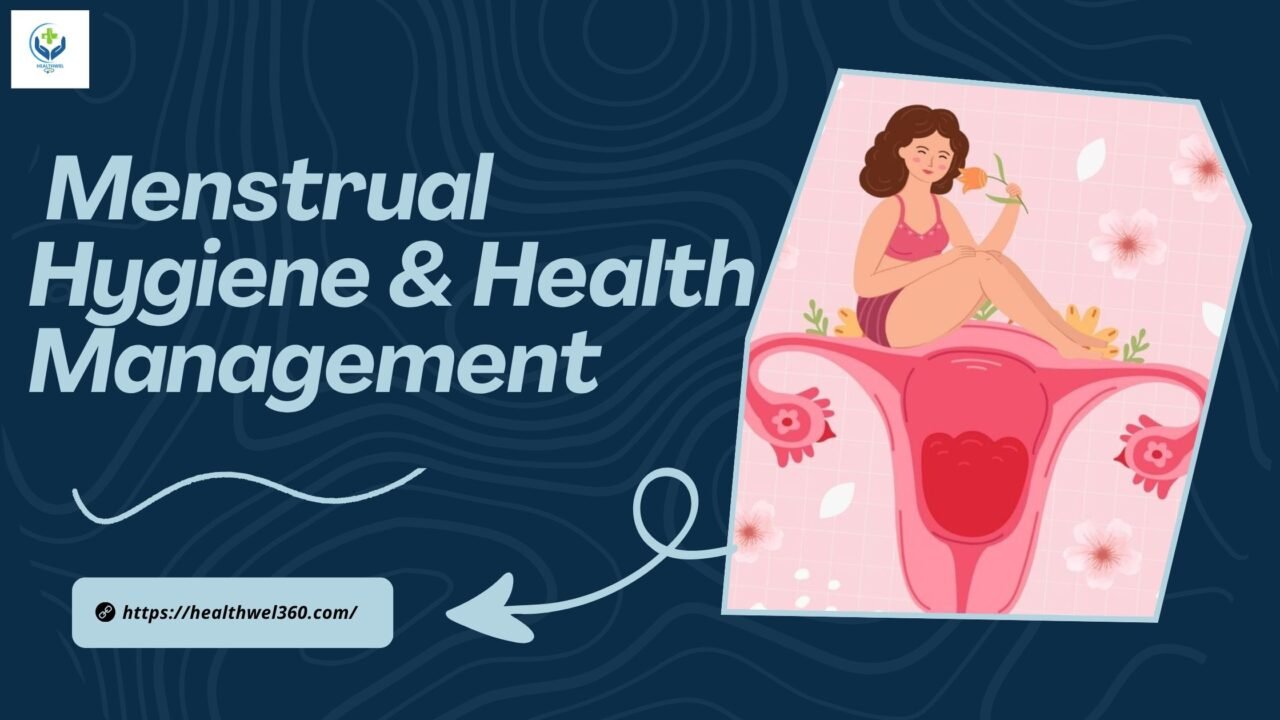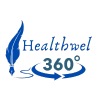What is Menstruation? A Complete Guide to Periods & Cycle Health, Menstruation, commonly referred to as a “period,” is a natural biological process experienced by women and people with uteri. It is a key aspect of reproductive health, marking the body’s preparation for potential pregnancy each month.
In spite of being a widespread involvement for half the world’s populace, feminine cycle remains covered in shame, myths, and deception in numerous societies.
This guide explores menstruation in detail—covering its biological basis, phases of the menstrual cycle, common symptoms, cultural perceptions, and the importance of menstrual health education.
1.The Biological Basis of Menstruation
Definition: The femalee cycle is the month-to-month shedding of the uterine lining (endometrium) when pregnancy does not happen. It results in bleeding from the uterus, which exits through the vagina.
Who Experiences It?
Typically begins in females during puberty (ages 9–16) and continues until menopause (~ages 45–55).
Also occurs in transgender men and non-binary individuals with uteri.
Why Does Menstruation Happen?
Hormones (oestrogen and progesterone) control the menstrual cycle and assist the body prepare for pregnancy. Hormone levels fall without fertilization, which triggers endometrial loss.
1. The Menstrual Cycle: Phases Explained
A menstrual cycle averages 28 days but can range from 21 to 35 days. It consists of four phases:
1. Menstrual Phase (Days 1–5)
The uterus sheds its lining, driving to dying (ordinarily 3–7 days).
Blood loss ranges from 30–80 mL per cycle.
2. Follicular Phase (Days 1–13)
The pituitary gland releases follicle-stimulating hormone (FSH), stimulating egg development in the ovaries.
Estrogen thickens the uterine lining to prepare for a fertilized egg.
3, Ovulation Phase (~Day 14)
The ovary releases a developed egg into the fallopian tube while pregnant.
This is the most productive period in the cycle.
4, Luteal Phase (Days 15–28)
The ruptured follicle forms the corpus luteum, releasing progesterone.
If fertilization does not occur, hormone levels fall, resulting in menstruation.
5. Common Menstrual Symptoms:
Menstruation affects individuals differently. Common symptoms include:

Cramps (caused by uterine contractions)
Bloating (due to water retention)
Fatigue (hormonal fluctuations)
Headaches or back pain
Breast tenderness
Emotional & Psychological Symptoms
Mood swings (linked to serotonin levels)
Irritability or anxiety
Depression (in cases of MDD-Premenstrual Dysphoric Disorder)
When to Seek Medical Help
Extremely heavy bleeding (soaking a pad/tampon every hour).
Severe pain (unmanageable with OTC painkillers).
Irregular cycles (consistently 21 or >35 days).
4. Cultural and Social Perspectives on Menstruation
Historical Beliefs & Myths
Old Greeks thought feminine cycle decontaminated the body.
Some cultures considered menstrual blood “unclean” (e.g., restrictions in Hinduism and Judaism).
Myths like “menstruating women can spoil food” persist in some regions.
Period disgracing: Numerous young ladies miss school due to need of items or shame.
Limited get to cleanliness items (“period destitution” influences millions).
Workplace discrimination (lack of paid menstrual leave in most countries).
Progress & Awareness
Movements like #PeriodEndofPoverty advocate for free menstrual products.
Countries like Scotland provide free period products by law.
More open discussions in media (e.g., Netflix’s Period. End of sentence.).
5. Menstrual Hygiene & Health Management

Essential Hygiene Practices
Changing pads/tampons each 4–6 hours (avoids diseases like TSS).
Washing hands some time recently and after dealing with menstrual products.
Using clean, absorbent materials (avoiding unsafe alternatives like rags or leaves).
Menstrual Product Options
| Product | Pros | Cons |
| Disposable Pads | Easy to use, widely available | Environmental waste |
| Tampons | Discreet, good for active use | Risk of TSS if left too long |
| Menstrual Cups | Reusable, eco-friendly, cost-effective | Learning curve for insertion |
| Period Underwear | Washable, leak-proof | Expensive upfront cost |
Sustainable Menstruation
Using reusable items (such cups and cloth pads) helps to reduce plastic waste.
Biodegradable pads are gaining popularity.
6. Menstrual Disorders & Health Conditions
Some individuals experience medical conditions related to menstruation:
1, Dysmenorrhea (Painful Periods)
Primary: Common cramps due to prostaglandins.
Secondary: due to diseases like fibroids as well as endometriosis.
2. Amenorrhea (Absent Periods)
Primary: No periods by age 16 (possible hormonal issues).
Secondary: Missing 3+ cycles (stress, PCOS, or excessive exercise).
3. PCOS (Polycystic Ovary Syndrome)
Symptoms include weight increase, excessive hair growth, and irregular periods.
Linked to insulin resistance and infertility.
4. Endometriosis
Tissue similar to the uterine lining develops outside the uterus.
Causes chronic pain and infertility.
7. The Importance of Menstrual Education
Why Education Matters Reduces shame and misinformation.
Helps girls manage symptoms effectively.
Encourages boys and men to be supportive.
How to Improve Awareness
School programs teaching puberty and menstrual health.
Parental guidance to normalize discussions at home.
Government policies that guarantee access to menstruation products.
Conclusion
Menstruation is a common, solid process—not something to be covered up or embarrassed of. By improving education, access to hygiene products, and breaking societal taboos, we can create a world where menstruation is understood and respected.
Final Thoughts
Normalize conversations about periods.
Promote equitable access to menstruation products.
Advocate for better healthcare for menstrual disorders.





Pingback: Reproductive & Sexual Health: A Comprehensive Guide for Women - healthwel360.com